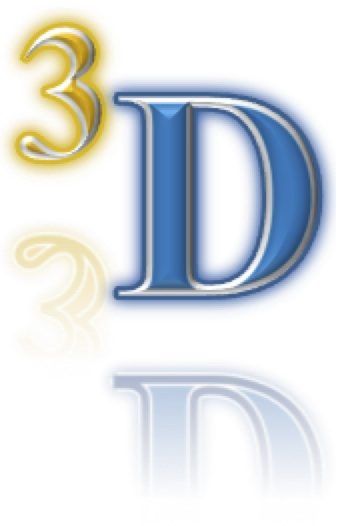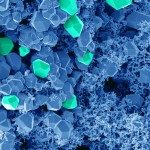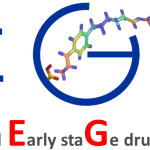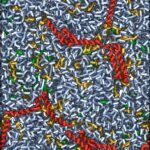
Dynamics of Functional Molecular Processes and Drug Design
Keywords: Molecular Dynamics; Functional molecular mechanisms; Drug Design
The focus of our group is to sharpen our understanding of the mechanisms involved in essential biological processes to elaborate novel strategies to fight pathological processes. For that we use modeling and molecular dynamics to:
– Build a detailed molecular description and understanding of those processes,
– Identify mechanistic levers to modulate the involved functions,
– Materialize this understanding by the discovery of effector molecules with therapeutic potency along this rational,
– Push this materialization as far as possible in our academic research framework implicating partnership with other laboratories or industry whenever possible.
These objectives are motivated by recognition of the fact that many pathologies results from the unsettling of physiological processes which can be induced through various molecular disorders. Causes can be attributed to defects in our own physiological processes or to a set of virulence weapons from pathogen agents. Hence, pathologies can results from numerous molecular mechanisms, which, in turn also constitute a vast reservoir of unexploited potential targets to solve health issues. We want to exploit this reservoir and develop relevant approaches and tools for that purpose.
We want to apply our research to various important health practical challenges. Viral, bacterial, parasite and cancer molecular factors have been studied in the past and some of these projects will be maintained.
Pentameric ion gated channels they constitute both an exciting target with many medical applications and a profound scientific challenge. Nicotinic receptors are of prime interest in those respects. A key aspect in this project is to have a strong collaborative environment to convert our hypotheses in discoveries. In this project, among others, we will strengthen our collaboration with the Unit of Pierre-Jean Corringer to pursue ambitious therapeutic challenges (eg. addiction, neurodegenerative diseases,…).
Exploiting molecular motions of virus envelope proteins is also a strong focus with Dengue (IRT project) and Rift Valley Fiver (collaborations with the Unit of Felix Rey).
One of our ambitions will also be to establish and maintain strong enough a task force to accommodate new incoming projects in addition to our ongoing projects if their interest or importance require a specific response. In the latter cases, a particular attention shall be dedicated to the establishment of sound experimental collaborative setup to ascertain the success of the projects.
One of our ambition is to maintain and further develop cutting edge technologies to address these questions in the most innovative way.
To analyze and explore the functional motions of key proteins in pathological processes, we will maintain the development of POE (Path Optimization and Exploration, in-house), SoS (String of Swarms, in-house customized version), the coupling of the two methods (SoS – POE, in-house), specific MD (Molecular Dynamics adapted for SoS – POE)).
To convert the mechanistic understanding of functional processes in molecular therapeutic strategies by identifying the most relevant effector binding sites, we will maintain the development of our software to identify and geometrically characterize the cavities and grooves, and their evolutions, in the target proteins(Cav+Poc).
To materialize the effector mechanisms, ChemoInformatics and Docking tools are maintained and developed. This will include ChemoLibrary management (distributed and in-house solutions), Virtual screening (distributed software) and analysis (in-house), Ligand based chemoinformatics, clustering and analoguing (mostly in house), chemical insight, QM (distributed software).
A specific attention is dedicated in developing new approaches (eg: fragments based, use of STD data), which imply conceptual development and specific experimental collaborations (eg. NMR facility and collaboration).




